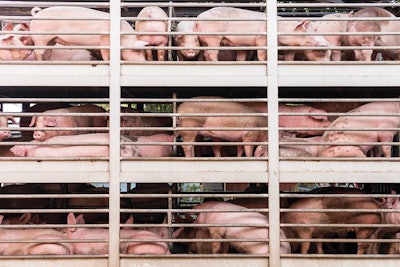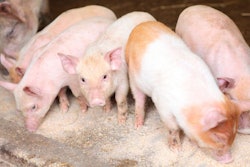
National Pork Producers Council asks for USDA pork purchases, direct payments to farmers
U.S. pork producers are asking the government to purchase more than US$1 billion in pork to clear out the backup of meat supply created by the novel coronavirus (COVID-19) pandemic.
In a media call on April 14, the National Pork Producers Council (NPPC) said it is asking for “massive” pork purchases by the U.S. Department of Agriculture (USDA), as well as payments to producers to help make up for losses of up to US$50 per pig that producers are experiencing.
“COVID-19 has had a sudden and devastating impact on U.S. hog farmers,” said NPPC president Howard “A.V.” Roth. “We are in crisis and need immediate government intervention to sustain a farm sector essential to the nation’s food supply.”
As a result of pork processing plant closures due to COVID-19, Roth said, hogs are “backing up on our farms, creating a financial crisis as hog values plummet and an animal welfare crisis as market-ready hogs have nowhere to go.”
Roth cited a recent analysis from Iowa State University economist Dermot Hayes and industry economist Steve Meyer that said hog farmers are projected to lose US$37 per hog marketed, or US$5 billion across the industry for the remainder of 2020. However, NPPC said it has heard from producers that their losses are much higher.
The NPPC’s request for the USDA to buy more than US$1 billion in pork would supply the nation’s food banks as they face a dramatic increase in demand as a result of widespread joblessness, and “should accommodate pork products packaged for restaurants and other segments of the foodservice market,” Roth said.
Removal of Chinese tariffs
Roth added that the NPPC would like to see China remove retaliatory tariffs on U.S. pork.
“It’s no secret that China needs a reliable source of affordable pork,” he said, adding that pork producers in China are experiencing record hog values and pork prices.
“Hogs basically have no value in the United States of America and are worth record amounts of money in China,” said Nick Giordano, NPPC’s vice president and counsel, global government affairs. “The Chinese need pork and, it seems to us, that, if they’re going to meet their Phase 1 (trade agreement) commitments … the simplest way to do that is to buy U.S. pork and to buy lots of it.”
Changes to loan programs
Roth said NPPC is also seeking a legislative fix to emergency loan programs that it says have left farmers behind by asking Congress to increase the cap on qualifying businesses to those that employ up to 1,500 and to make agricultural businesses eligible for the Economic Injury Disaster Loan Program.
“Approximately 10,000 family hog farms are in jeopardy because they do not have access to much-needed capital offered by the Small Business Administration,” Roth said. “We are resilient and typically a self-sufficient bunch, but COVID-19 has created unprecedented circumstances. We need swift government action to support our families’ farms.”
Roth acknowledged that, if the on-farm hog inventory gets too high, euthanasia may become a possibility. But he said that government aid can help farmers avoid that.
“We care about our animals,” he said. “The last thing we would ever want to do is euthanize one. We are going to do everything in our power to make sure that we don’t do that.”
‘The consumer shouldn’t worry’
Because of stay-at-home orders issued across the country and subsequent grocery purchases, retail demand for pork remains strong, said NPPC CEO Neil Dierks.
However, he said, “the foodservice side of our business, which accounts for about a quarter of all the pork in the United States, shut down. … So that’s part of the issue that’s led to both cold storage as well as drops in wholesale prices of the pork carcass, which of course leads right through to the hog price.”
The temporary idling of some packing plants due to COVID-19 is also complicating the hog oversupply issue, Dierks said.
“That’s also exacerbated this situation for producers,” he said. “Ultimately, long term, if it continues, will have an impact on availability. At this junction, the pipeline is full and we have some pork in storage, so the consumer shouldn’t worry in the near term. But it creates a terrible situation on the farm.”
Giordano agreed that, if left unresolved for too long, there will be supply problems for consumers, but the problem right now is at farm level.
“The crisis today is on the farm, not in the grocery store,” Giordano said.











